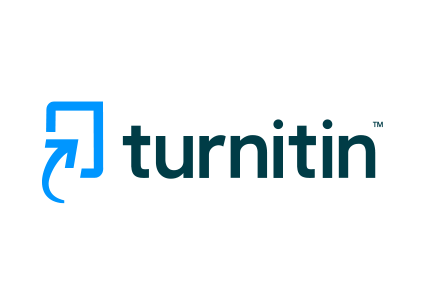THE STUDENTS PERSPECTIVE IN USE GOOGLE FORM IN ENGLISH TEST AT SD KARTIKA 1-4 PEMATANGSIANTAR
Abstract
This study looks into students' thoughts on the use of Google Forms as a learning assessment tool in English language assessments. The research employed a quantitative methodology using questionnaires to gather data from fifth-grade students at SD KARTIKA 1-4 Pematangsiantar. The study focused on three key aspects of Google Forms: attractiveness, accessibility, and effectiveness. Due to the data, students generally found Google Forms attractive, with most of them like the platform's display. . However, accessibility posed challenges, with students reporting difficulties operating Google Forms, experiencing interruptions due to slow internet connections, and expressing concerns about the potential for cheating. Regarding effectiveness, students found Google Forms facilitated understanding of English test questions and preferred it over traditional paper-based tests. They also felt more confident answering questions using Google Forms. However, the immediate feedback provided by Google Forms caused anxiety for some students. . The study concludes that while Google Forms offers advantages in terms of convenience and accessibility, Challenges connected to internet access, technological concerns, and the possibility for cheating must be overcome to ensure its successful and equitable use in educational contexts. The findings highlight the importance of considering students' perspectives when integrating digital assessment tools into the learning process and underscore the need for ongoing efforts to improve the accessibility and reliability of such technologies.
References
Lewin, C., Somekh, B., & Steadman, S. (2008). Embedding interactive whiteboards in teaching and learning: The process of change in pedagogic practice. Education and Information Technologies, 13. https://doi.org/10.1007/s10639-008-9070-z
Sofian, R. F., & Anggraeni, A. (2021). an Analysis the Use of Visual Media in Teaching English To Young Learners. PROJECT (Professional Journal of English Education), 4(4), 622. https://doi.org/10.22460/project.v4i4.p622-627
Educational technology is the study and ethical practice of facilitating learning and improving performance by creating, using, and managing appropriate technological processes and (Pratice, 2004)
Nursani, Zaiturrahmi, & Diana, N. (2024). Students’ Perspective Toward the Implementation of Google Form As a Digital Learning Assessment Tool. English Education and Applied Linguistics Journal (EEAL Journal), 7(2), 85–93. https://doi.org/10.31980/eeal.v7i2.1624
Pratice, E. (2004). Teknologi Pendidikan 2004. 1–5.
Irham, N. R., Dewi, U., & Daulay, S. H. (2023). Problems in Using Google Form on English Examination: Exploring Students’ Perspective. Conference on English Language Teaching, 568–575. Retrieved from https://scholar.google.com/citations?view_op=view_citation&hl=en&user=rDrMsl4AAAAJ&pagesize=100&citation_for_view=rDrMsl4AAAAJ:4DMP91E08xMC
Wqfubwa, R. N. (2020). Role of Formative Assessment in Improving Students’ Motivation, Engagement, and Achievement: A Systematic Review of Literature. International Journal of Assessment and Evaluation, 28(1), 17–31. https://doi.org/10.18848/2327-7920/CGP/V28I01/17-31
Sekretariat GTK. (2018, December 3). GTK Kemendikbud | 2023. https://gtk.dikdasmen.go.id/read-news/40-persen-guru-yang-siap-dengan-teknologi
Gikandi, J. W., Morrow, D., & Davis, N. E. (2011). Online formative assessment in higher education: A review of the literature. Computers & Education, 57(4), 2333–2351. https://doi.org/10.1016/J.COMPEDU.2011.06.004
Syahria, N. (2019). THE UTILIZATION OF DIGITAL ASSESSMENT FOR A BETTER LEARNING EXPERIENCES (Penggunaan Penilaian Digital untuk Pengalaman Belajar yang Lebih Baik). Sirok Bastra, 7(1), 61–72. https://doi.org/10.37671/sb.v7i1.155
Elfira, I., Syamsurizal, S., & Lufri, L. (2023). Systematic Literature Review : Efektivitas Penggunaan Google Form untuk Evaluasi Pembelajaran. Mathema: Jurnal Pendidikan Matematika, 5(2), 93–109. Retrieved from https://ejurnal.teknokrat.ac.id/index.php/jurnalmathema/article/view/2811
Bilingual, J., By, P., Google, U., English, B., & Academic, A. (2023). 1 , 2 1,2. 13(1), 73–80.
Rana, J., Lorena, P., Gutierrez, L., & Oldroyd, J. (2020). Global Encyclopedia of Public Administration, Public Policy, and Governance. Global Encyclopedia of Public Administration, Public Policy, and Governance, (June). https://doi.org/10.1007/978-3-319-31816-5
Sogunro, O. (2001). Mixed__Qual_and_Qant_compared.pdf. Educational Research Quarterly, pp. 3–10.
Di, E., Pujud, S., Di, E., & Pujud, S. (n.d.). Analisis tentang faktor kesulitan belajar ekstren di smpn 10 pujud. 1–14.
Sugiono. (2013). Metode Penelitian Kuantitatif, Kualitatif, dan R&D.
Asiva Noor Rachmayani. (2015). STUDENT’S VIEW TOWARDS THE USE OF GOOGLE FORM APPLICATION IN TEACHING READING. 6.
Easton. (2021). What kind of support do teachers really need in a blended learning context? Australasian Journal of Educational Technology, 37(4), 116–129. https://doi.org/10.14742/ajet.6592
John W. Creswell (2012, 2013). (2009). Qualitative, Quantitative, and Mixed-Methods Research. Microbe Magazine, 4(11), 485–485. https://doi.org/10.1128/microbe.4.485.1
Creswell, 2008. (2010). Research Design. Trends in Cognitive Sciences, 14(2), 88–100. Retrieved from http://landing.adobe.com/en/sea/products/acrobat/69210-may-prospects.html?trackingid=KTKAA
Cresswell, 1994. (2001). Selecting a Qualitative or Qualitative Research Methodology: An Experience. Educational Research Quarterly, pp. 3–10.
Downloads
Published
Versions
- 2025-02-10 (2)
- 2025-01-30 (1)
Issue
Section
License
Copyright (c) 2024 Dumaris Elseria Silalahi, Tio Lestari Simanjuntak, Lusia Pebriyani Silaban

This work is licensed under a Creative Commons Attribution-NonCommercial-ShareAlike 4.0 International License.










